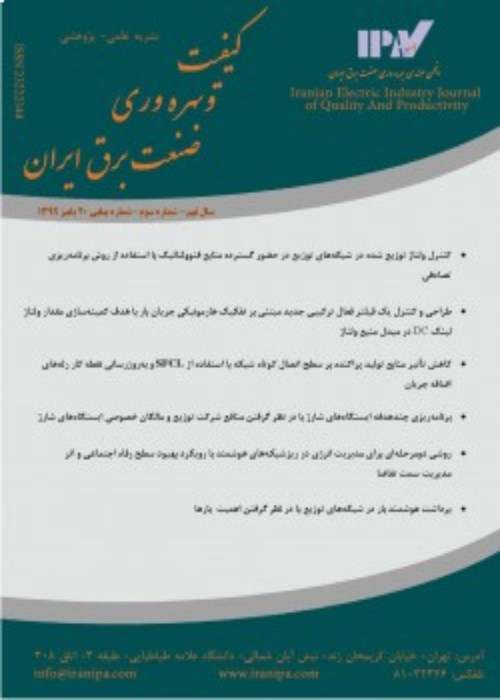Fault Diagnosis and Fault -Tolerant Control of DFIG Back -To - Back Converter Switch Open -Circuit Based on a New SVM Commo n -Leg Method with the Application of a Wind Turbine
One of the most common types of wind turbines (WTs) is the Doubly-Fed Induction Generator (DFIG) with a back-to-back converter. The power converter with an Insulated Gate Bipolar Transistor (IGBT) switch is essential equipment for power regulation and grid connection in WTs. The converter IGBT open-circuit causes a drawback in output current and as a result, the production performance of the turbine is reduced. Condition Monitoring (CM), Fault Diagnostic (FD), and Fault-Tolerant Control (FTC) of a WT increase the reliability and availability of the turbine and are typical methods to reduce energy production costs and WT downtime. The IGBT switch’s open-circuit failure rate is significant compared to the overall fault rate in WTs. This paper discusses IGBT open-circuit FTC in back-to-back DFIG converters. In the proposed structure, the converter switch fault is first diagnosed using a fast and numerical method. In the first part, a method based on normalized phase currents, the absolute of the phase currents, and an adaptive threshold is used. The FTC system can be divided into two classes of redundancy and non-redundancy or into active and inactive classes. In this article, the proposed method is active and non-redundancy. In the second step, the FTC process is activated to compensate for the system degradation. In this method, the faulty leg is removed with the gate opening of both IGBTs in one leg by the controller, and one of the legs is positioned as a common leg between the two grid side and rotor side converters. The conventional method in this structure is to use Pulse Width Modulation (PWM) with a zero sequence signal. The novelty of the paper is the use of the proposed SVM vector control. The proposed structure is inexpensive. Furthermore, the fault diagnostic structure operates without additional sensors and the FTC structure operates with minimal hardware. To evaluate the proposed structure, a 2.5 MW turbine software simulator based on real data is used. The simulations show that the proposed method is effective and robust in FD and FTC and that the proposed method is successful in detecting multiple defects of the grid-side and rotor-side converters, as well as the defects of one leg. The proposed method can compensate for the open switch fault to construct three-phase output currents by comparing the numerical parameters. The ability of the proposed method is specified.
- حق عضویت دریافتی صرف حمایت از نشریات عضو و نگهداری، تکمیل و توسعه مگیران میشود.
- پرداخت حق اشتراک و دانلود مقالات اجازه بازنشر آن در سایر رسانههای چاپی و دیجیتال را به کاربر نمیدهد.


